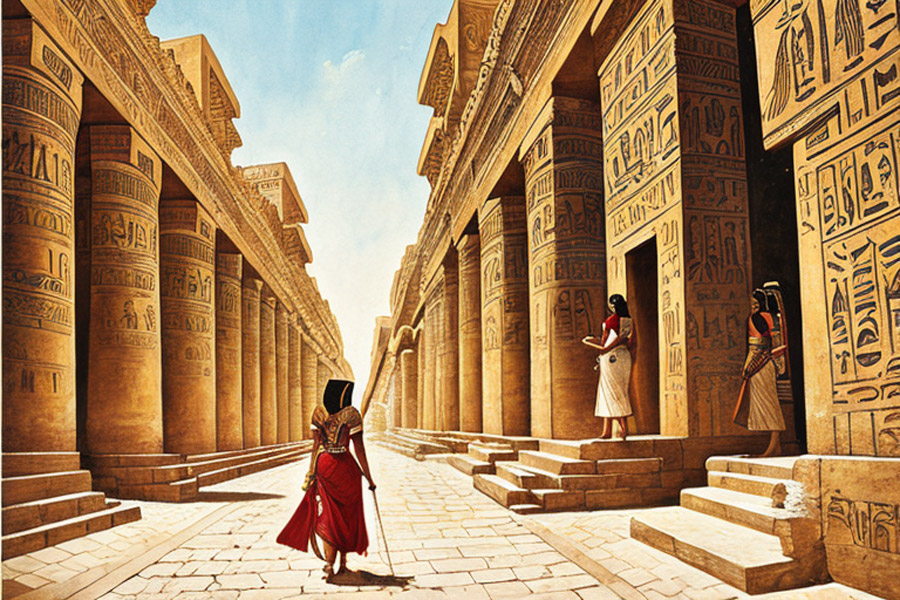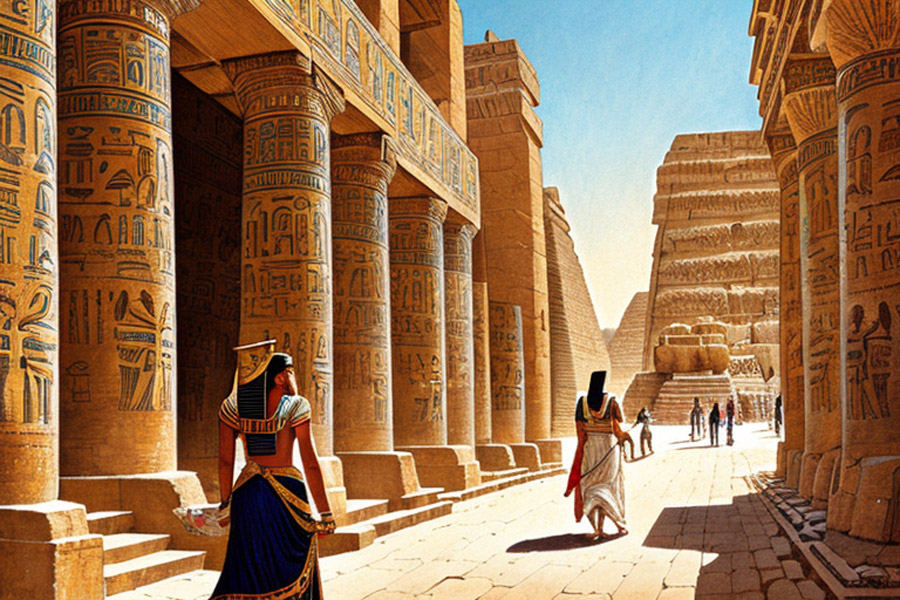Unlock the magic of ancient Egypt with our Egyptian Hieroglyphics Translator. Convert English text into captivating hieroglyphs for creative expression and exploration. Explore the world of hieroglyphics today!
Notepad:

Delve into the fascinating world of Egyptian Hieroglyphics, the script that adorned the tombs and monuments of ancient Egypt. Our Egyptian Hieroglyphics Translator is your portal to a mesmerizing journey through time, allowing you to transform everyday English text into the enigmatic symbols of this ancient civilization.
Discover the Egyptian Hieroglyphics Translator
Imagine having the power to turn your words into hieroglyphic art, reminiscent of the grandeur of the pharaohs. Our Egyptian Hieroglyphics Translator is a fun and interactive tool designed for anyone intrigued by the mysteries of Egypt. Whether you’re a history buff, a creative writer, or simply looking for a unique way to express yourself, this tool is your key to the world of hieroglyphs. [hfe_template id=’9721′]
Unveiling the Magic of Egyptian Hieroglyphics
Egyptian Hieroglyphics, the writing system of the ancient Egyptians, has captivated the world for centuries. Each hieroglyphic symbol represents a word, a sound, or a concept, making it a rich and complex script. While it cannot be directly translated into the modern English alphabet, our translator captures the essence and beauty of these symbols, allowing you to adorn your messages with a touch of ancient Egypt.
How It Works
Using the Egyptian Hieroglyphics Translator is a breeze. Just type or paste your English text into the input field, and with a simple click, watch your text transform into a stunning display of hieroglyphic characters. You’ll see your words come to life in a way that echoes the grandeur of the Nile Valley. [hfe_template id=’9721′]
A Tool for Creativity
Embrace your inner artist and explore the endless creative possibilities. Whether you’re sending a unique message to a friend or adding an intriguing twist to your social media posts, the Egyptian Hieroglyphics Translator lets you infuse a sense of wonder and mystique into your communication. [hfe_template id=’9721′]
A Word of Caution: Accuracy vs. Artistry
While our Egyptian Hieroglyphics Translator provides a captivating visual representation of English text, it’s important to note that it does not offer accurate translations into ancient Egyptian. Egyptian Hieroglyphics is a complex script, and precise translation involves a deep understanding of its grammar and context. Our tool is meant for entertainment and creative expression, not scholarly or historical purposes.
Sharing Your Hieroglyphic Creations
Once your text is transformed into hieroglyphics, it’s yours to share and enjoy. Copy and paste your artwork into emails, messages, documents, or social media platforms. Leave your friends and followers intrigued and amazed by the distinctive beauty of hieroglyphic writing.
These creative hieroglyphics always attract a lot of attention. They are like ancient works of art, reminiscent of the magnificent culture of ancient Egypt.
Hieroglyphics are used to depict humans, animals, or plants and have been used throughout Egypt for thousands of years.
Those who truly love this ancient script would love to decorate their belongings with similar characters. For them, receiving a gift related to Egyptian hieroglyphics is a pleasant surprise.
Try making Custom Pins for your Egyptian culture-loving friend.
[hfe_template id=’9721′]

10 Intriguing Facts and Aspects About Egyptian Hieroglyphics
Here are 10 intriguing facts and aspects about Egyptian Hieroglyphics:
1. Ancient Writing System: Egyptian Hieroglyphics is one of the world’s oldest known writing systems, dating back to around 3000 BCE. It was used for religious texts, inscriptions, and monumental art.
2. Picture-Based Symbols: Hieroglyphics are comprised of thousands of intricate symbols, many of which represent objects, animals, or concepts. Some symbols are logograms, representing entire words or ideas.
3. Multilayered Script: Egyptian Hieroglyphics is a complex script with multiple levels of meaning. It can be read horizontally or vertically and often incorporates phonetic and ideographic elements.
4. Hieratic Script: In addition to hieroglyphs, ancient Egyptians used a cursive script called hieratic for everyday writing, which was faster to write than hieroglyphs.
5. Direction of Writing: Hieroglyphics could be written from left to right, right to left, or top to bottom, depending on the context. Determining the correct reading direction can sometimes be a challenge.
6. Rosetta Stone Discovery: The Rosetta Stone, discovered in 1799, played a crucial role in deciphering hieroglyphics. It contained inscriptions in three scripts: Greek, demotic, and hieroglyphic, allowing scholars to unlock the meaning of hieroglyphs.
7. Phonetic Elements: Some hieroglyphs represent consonants and vowel sounds, which can be combined to spell out words. Others are purely ideographic, conveying specific concepts.
8. A Mix of Art and Writing: Hieroglyphics often served as both writing and art. They adorned temples, tombs, and monuments, turning these structures into visual masterpieces.
9. Decipherment Challenge: Deciphering hieroglyphs was a monumental task. Jean-François Champollion, a French scholar, is credited with successfully deciphering hieroglyphics in the early 19th century.
10. Continued Cultural Significance: Although hieroglyphics are no longer used for everyday writing, they remain an important part of Egypt’s cultural heritage. Modern Egyptologists and artists continue to study and use hieroglyphs to connect with Egypt’s rich history.
These facts highlight the complexity and enduring legacy of Egyptian Hieroglyphics, a writing system that has captivated scholars and enthusiasts for centuries.
[hfe_template id=’9721′]

10 Fascinating Facts About Ancient Egyptians
Here are 10 fascinating facts about ancient Egyptians:
1. Advanced Medicine: Ancient Egyptians were pioneers in the field of medicine. They practiced surgery, and dentistry, and had a comprehensive understanding of various diseases and treatments. The Edwin Smith Surgical Papyrus, dating back to around 1600 BCE, is one of the world’s oldest surgical texts.
2. The Pyramids of Giza: The Great Pyramid of Giza is one of the Seven Wonders of the Ancient World. Built over 4,500 years ago, it was the tallest man-made structure on Earth for over 3,800 years.
3. Hieroglyphics: The Egyptians developed a complex system of writing known as hieroglyphics. This script used intricate symbols to represent sounds, words, and concepts and was used extensively for inscriptions on tombs, monuments, and papyrus.
4. The Rosetta Stone: The Rosetta Stone, discovered in 1799, played a pivotal role in deciphering hieroglyphics. It contained inscriptions in three scripts: Greek, demotic, and hieroglyphic, providing scholars with a key to understanding the hieroglyphic script.
5. Mummification: Egyptians believed in an afterlife and practiced mummification to preserve the bodies of the deceased. This complex process involved removing organs, drying the body, and wrapping it in linen bandages. Many well-preserved mummies have been found.
6. A Complex Pantheon: Egyptian religion featured a vast pantheon of gods and goddesses, each with specific attributes and roles. Among the most famous are Ra, the sun god, and Isis, the goddess of magic and motherhood.
7. The World’s Oldest Dress: The Tarkhan Dress, discovered in an Egyptian tomb and dated to around 2800 BCE, is the world’s oldest known woven garment. It’s a testament to the advanced textile skills of the ancient Egyptians.
8. Papyrus Paper: Egyptians developed papyrus, one of the earliest forms of paper, from the pith of the papyrus plant. This innovation revolutionized writing and record-keeping in ancient Egypt and beyond.
9. Cleopatra: Cleopatra VII, the last Pharaoh of Egypt, is one of the most famous figures in Egyptian history. Her romantic liaisons with Julius Caesar and Mark Antony have been the subject of countless stories, plays, and movies.
10. The Valley of the Kings: The Valley of the Kings on the west bank of the Nile in Luxor is a burial ground for many pharaohs and nobles. It’s famous for its richly decorated tombs, including that of Tutankhamun, discovered nearly intact in 1922, revealing a wealth of artifacts.
These facts offer just a glimpse into the rich and complex history of ancient Egypt, a civilization that left an indelible mark on human culture and history.
[hfe_template id=’9721′]

Frequently Asked Questions (FAQ) – Hieroglyphics Translator
What is the Egyptian Hieroglyphics Translator?
The Egyptian Hieroglyphics Translator is a fun and interactive tool that converts English text into Egyptian Hieroglyphics, allowing you to create visually intriguing text for various purposes.
Is the translation accurate?
No, the translations provided by this tool are not accurate representations of the original Egyptian language. Egyptian Hieroglyphics is a complex script with no direct one-to-one equivalent in the modern English alphabet. This tool is for entertainment and creative purposes only and should not be used for scholarly or historical translations.
How does it work?
Simply type or paste your English text into the input field and click the “Translate” button. The tool will convert your text into a visual representation using Egyptian Hieroglyphics characters. You can then copy and use the translated text on other platforms.
Is it free to use?
Yes, the Egyptian Hieroglyphics Translator is completely free to use. Enjoy the creative possibilities without any cost.
Is it easy to use?
Yes, the tool is designed to be user-friendly. Just input your text and click “Translate” to instantly see your text transformed into Egyptian Hieroglyphics.
Can I use the translated text elsewhere?
Absolutely! Once your text is translated, you can easily copy it and use it in social media posts, emails, or any other platform where you want to add a unique touch to your messages.
Is it suitable for educational or historical purposes?
No, this tool is not intended for educational or historical purposes. It’s purely for fun and creative expression.
Where can I access the Egyptian Hieroglyphics Translator?
You can use the Egyptian Hieroglyphics Translator right here on this page. Simply enter your text, click “Translate,” and start exploring the world of Egyptian Hieroglyphics-inspired text.
Remember, have fun and get creative with your translations, but don’t expect them to be historically or linguistically accurate. Enjoy the tool for its entertainment value!
[hfe_template id=’9721′]
Conclusion
The Egyptian Hieroglyphics Translator is your invitation to embark on a unique adventure through the annals of ancient Egypt. Unleash your creativity, explore the mysteries of hieroglyphics, and share your newfound artistry with the world. While you may not be deciphering inscriptions in the Valley of the Kings, you’re certainly unlocking a world of wonder with every click.
So, are you ready to journey back in time and transform your words into the hieroglyphs of the pharaohs? Try out the Egyptian Hieroglyphics Translator today, and let your imagination soar amid the sands of ancient Egypt. Enjoy the experience, and remember, the art of hieroglyphics is at your fingertips!
[hfe_template id=’9721′]
